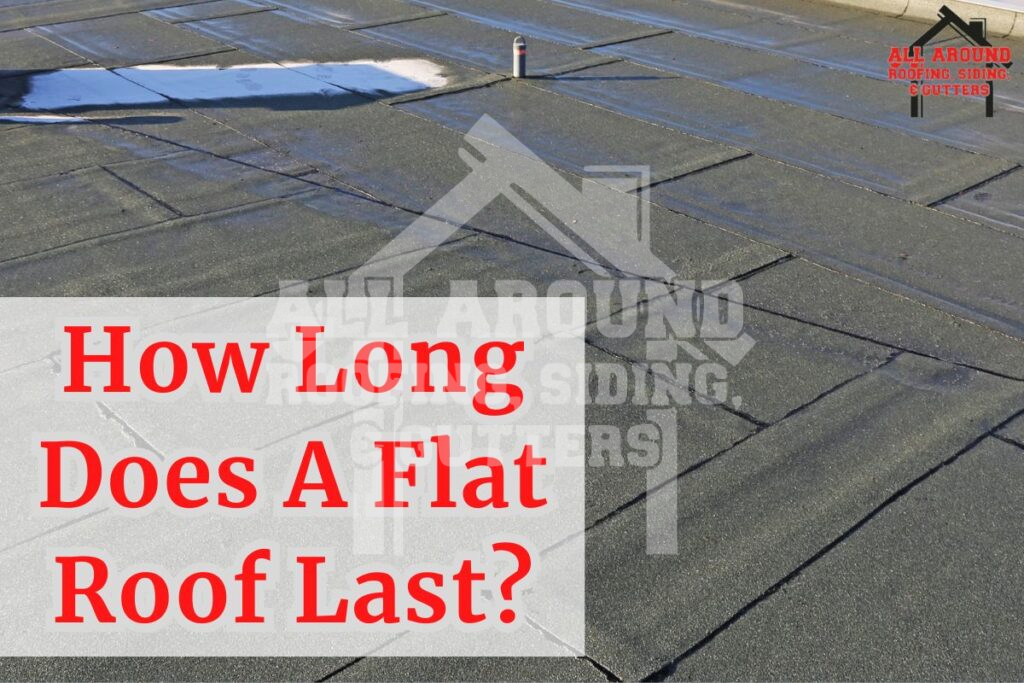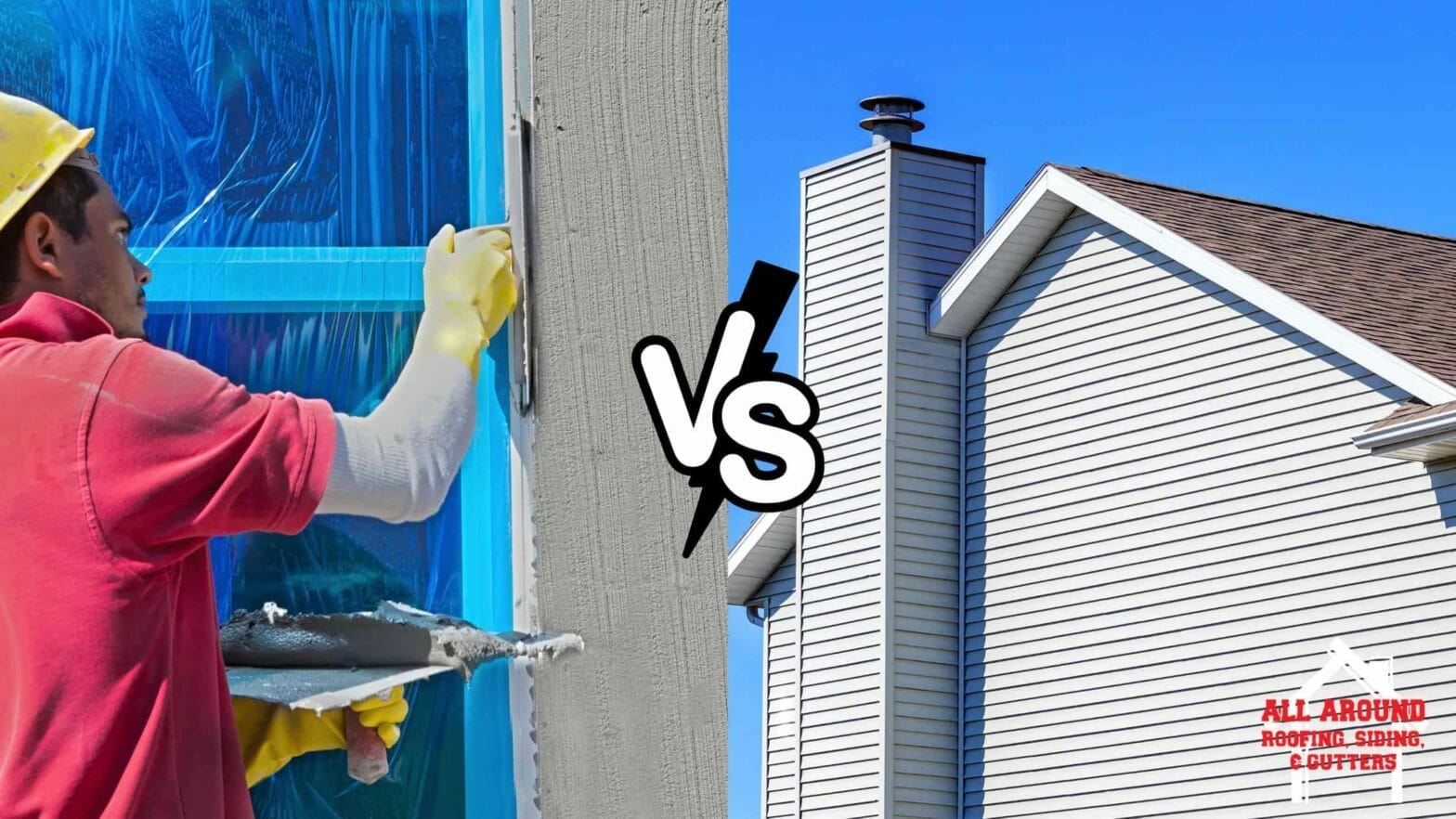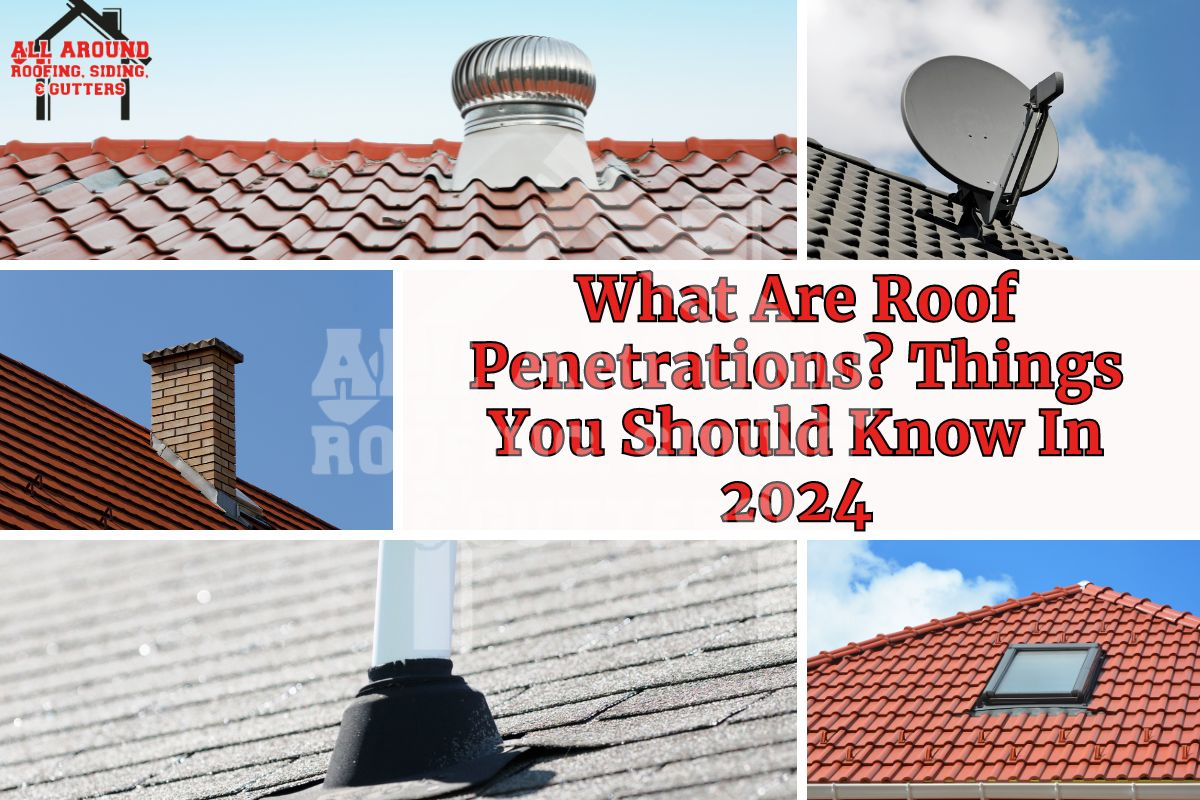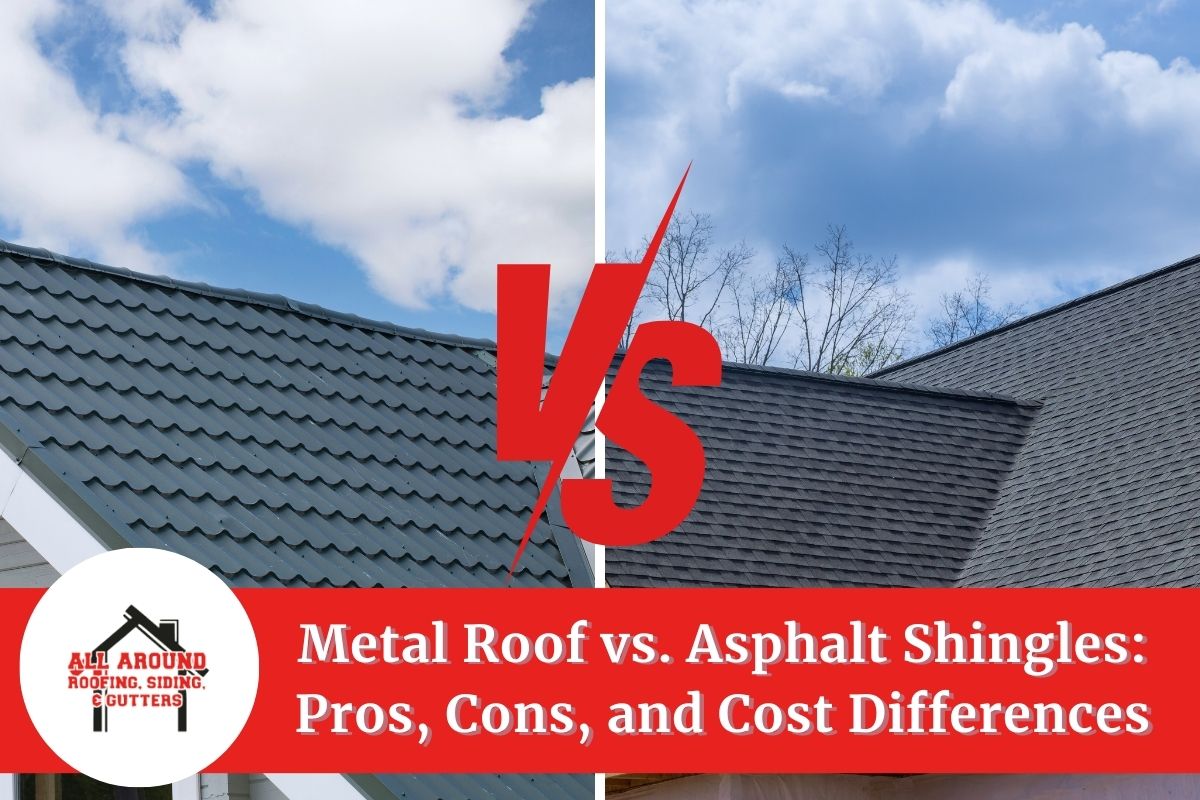Ever wondered why flat roofs are becoming so popular for homes and businesses? The cost-effectiveness, contemporary aesthetic, and efficient use of space are driving their popularity for residential and commercial buildings. However, “How long does a flat roof last?” is a major question for those considering this type of roof. Just like any other building component, it is important to take care of it and schedule repairs to maintain the roof’s strength.
So, whether you manage a property or own a home, let’s get into this blog post and find out how long flat roofs usually last.
What Is The Typical Lifespan Of A Flat Roof?
A low slope, usually less than 3:12, is what defines a flat roofing system. In addition to serving as bases for HVAC units, they are intended to offer a level surface for a variety of uses, including storage and outdoor living areas. The materials used in the construction of a flat roof determine how long it will last, but with proper maintenance flat roofs generally last 25-30 years.
Let’s delve in to learn a bit about different types of flat roofs and how long they can last:
1. EPDM (Ethylene Propylene Diene Monomer)
Lifespan: 40-50 years
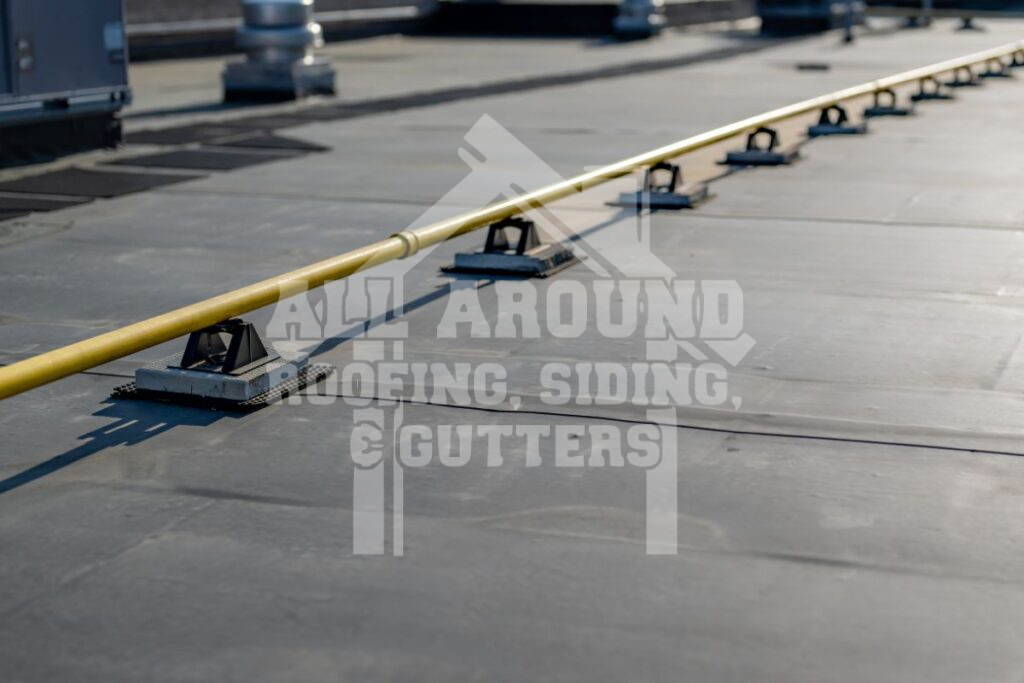
EPDM, a kind of synthetic rubber, is a common choice for flat roofs. Because of the mixture of products used to make it, EPDM is strong, weather-resistant, and flexible. EPDM roofs are renowned for their long lifespan and are not easily harmed by the sun or extremely cold temperatures. They are installed in large sections and sealed to keep water out. Their easy installation, low maintenance requirements, and long lifespan make them popular.
2. TPO (Thermoplastic Polyolefin)
Lifespan: 20-25 years
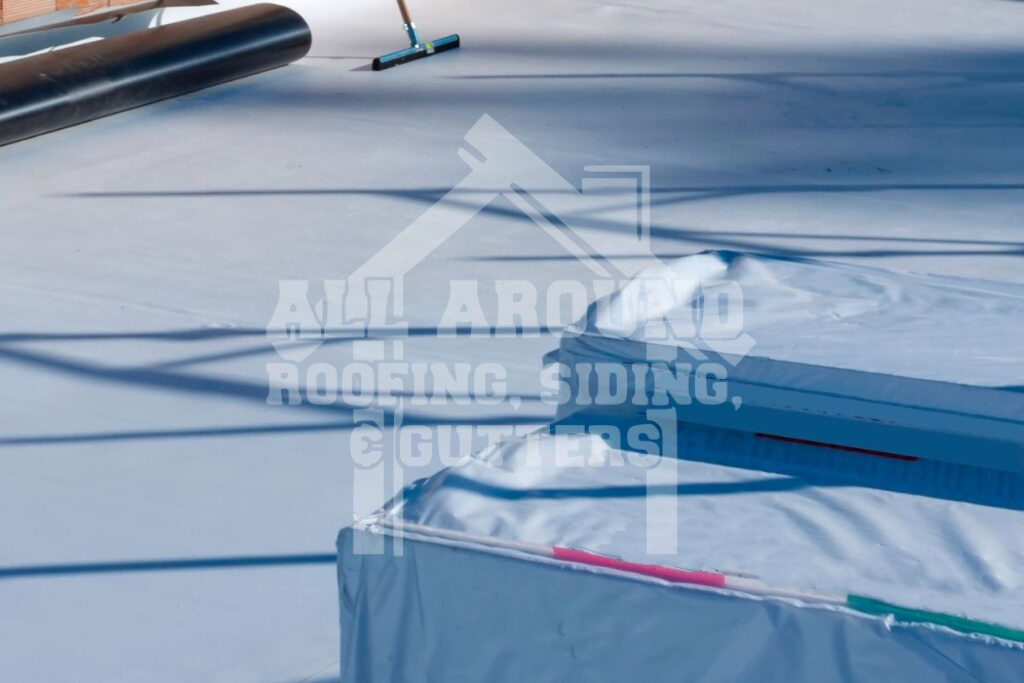
The next option is TPO, a kind of flat roofing membrane composed of various materials. It is resistant to sun damage, bends without breaking, and can reduce energy usage. It is widely used on large buildings due to its environmental friendliness, low weight, and ability to keep interior spaces cool. It’s ideal for flat or slightly sloping roofs because it’s durable and resists tearing or chemical damage.
3. Modified Bitumen
Lifespan: 20-25 years
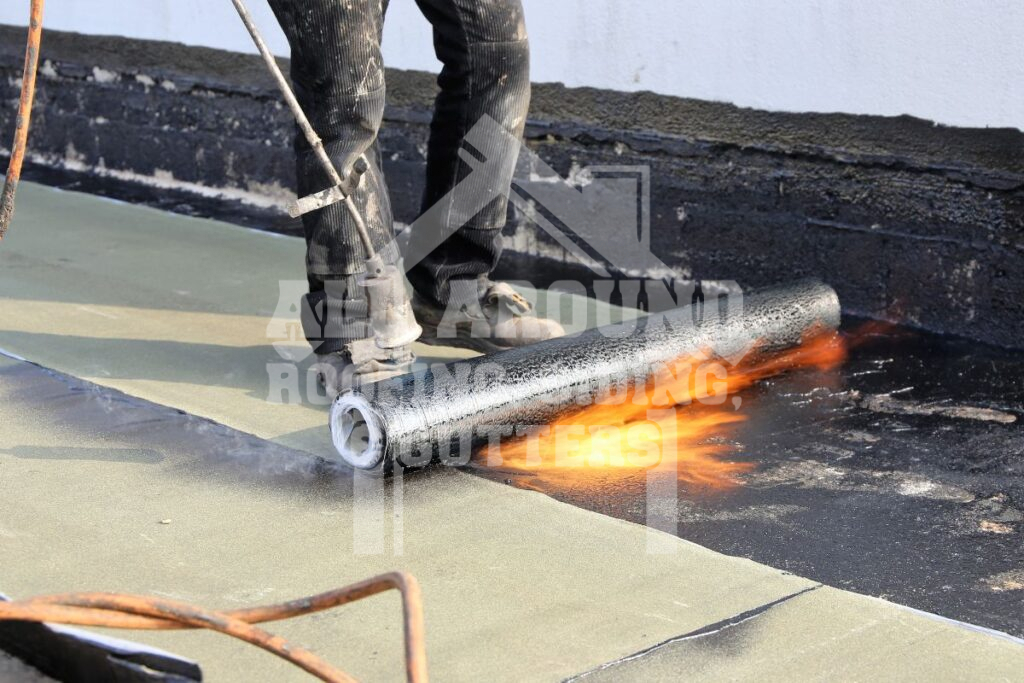
Modified bitumen roofs are composed of asphalt blended with special materials such as rubber or plastic to give them flexibility and strength. They are used on flat or almost flat roofs, where conventional shingles do not function well. The layers of these roofs adhere together to keep water out. They are resilient and able to withstand inclement weather, such as intense winds or constant sunshine.
4. Built-Up Roof (BUR)
Lifespan: 20-30 years
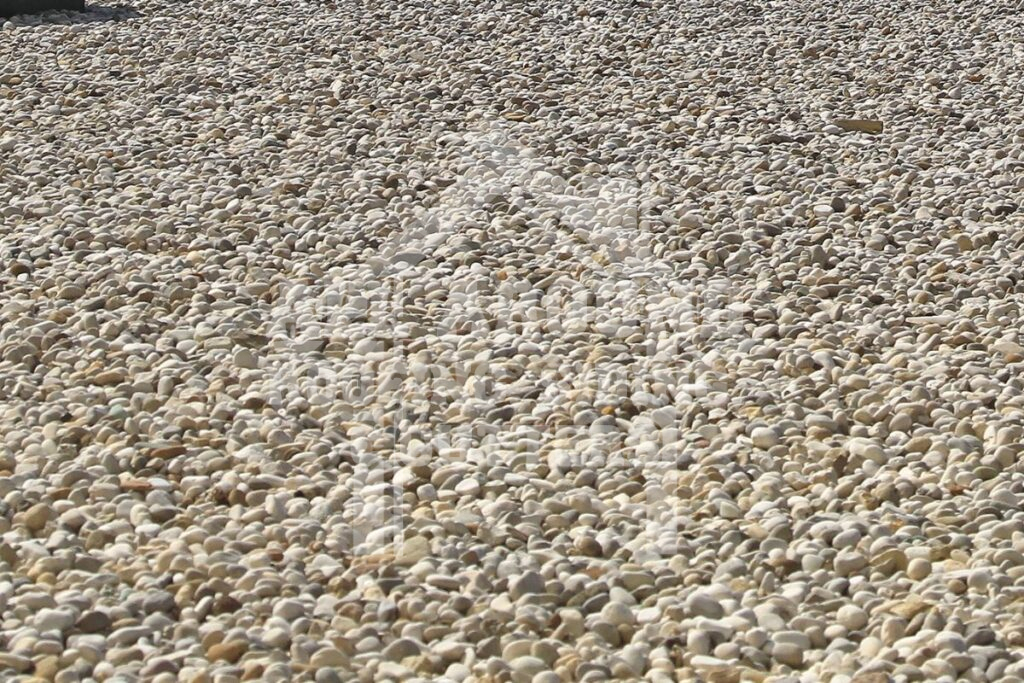
Built-up roofing systems are a classic way of making flat roofs with many layers of different materials, such as bitumen and fabrics. These layers are stacked on top of each other to make a strong shield against the sun and rain. Built-up roofs are often used on larger buildings with flat or slightly sloped roofs because their durable and can resist fire.
5. PVC (Polyvinyl Chloride)
Lifespan: 20-25 years
PVC roofs are made from a specific kind of plastic. They are resilient to chemicals, are sturdy, and simple to maintain. To prevent water intrusion, these roofs are firmly attached to the roof deck. Thanks to their ability to reflect sunlight, PVC roofs help buildings stay cooler. Flat or slightly sloping roofs, in both residential and commercial settings, are frequently made of PVC.
Factors Affecting a Flat Roof’s Lifespan
1. Choice of Roofing Material
Different roofing materials have varying lifespans, impacting how long a flat roof will last.
2. Construction Design
The design of a flat roof, particularly its slope, affects its durability. Pitched roofs generally last longer compared to flat roofs due to better water drainage, reducing the risk of leaks. But flat roofs can accommodate more durable materials, extending their lifespan.
3. Weather Exposure
Weather conditions significantly impact a flat roof’s lifespan. Harsh elements like strong winds, hail, and UV rays can accelerate material deterioration. High temperatures and prolonged sun exposure may cause colors to fade and materials to crack, while heavy rains can lead to water damage and leaks.
4. Wildlife and Pests
The presence of wildlife and pests poses a threat to flat roof integrity. Animals like squirrels, birds, raccoons, and insects may damage roofing materials. Termites, especially, can compromise the roof structure. Promptly addressing wildlife and pest issues preserves flat roof longevity.
5. Insulation and Ventilation
Proper flat roof insulation retains winter heat and prevents ice buildup, while ventilation keeps the roof cool in summer, reducing the risk of damage. Inadequate insulation and ventilation can accelorate roofing material deterioration, affecting overall its lifespan.
6. Installation Quality
Quality installation is crucial for a flat roof’s longevity. Choosing an experienced contractor ensures proper installation, preventing premature failure. Errors during installation can significantly shorten a flat roof’s lifespan.
7. Regular Maintenance
Proactive upkeep is essential to prolonging the life of a flat roof. Premature deterioration can be avoided by performing chores like debris removal, gutter cleaning, and damage assessments. Annual inspections and prompt repairs help to prevent expensive repairs or replacements by identifying and addressing possible issues early on.
Are There Any Signs That My Flat Roof Needs Replacement?
- Water Pooling: Pooling water on your flat roof can lead to stress and cracks. Consistent water accumulation signals the need for attention.
- Organic Growth: Algae, lichens, or moss growth indicates water retention issues, which, if untreated, could potentially cause significant damage.
- Damaged Top Coat: A fluttering sound in windy conditions or visible splits suggest damage to the top coating, exposing the roof to the elements.
- Visible Deterioration: Cracks, bubbling, blistering, or other signs of wear indicate the roofing materials have reached the end of their lifespan.
- Loose Fasteners: Loose fasteners create gaps in single-ply roofs, allowing water penetration and damage.
- Visible Leaks: Water stains, damp spots, or mold growth indoors indicate a compromised roof membrane.
- Excessive Energy Bills: A sudden rise in energy bills may signal an aging roof that is no longer providing adequate insulation.
How To Make A Flat Roof Last Longer
1. Professional Installation
Professional installation is vital for flat roof longevity. It reduces the risk of roof failure and ensures compliance with specifications and building codes, saving money in the long run.
2. Regular Maintenance
Inspecting your roof twice a year catches early signs of damage and prevents minor issues from escalating. Keeping the roof clean avoids water accumulation, extending its lifespan and avoiding costly repairs.
3. Drainage Management
For flat roofs, proper drainage is important to prevent ponding water, which can lead to leaks and damage. Installing additional drains or creating tapered areas facilitates water flow, especially in heavy rainfall or snowfall areas.
4. Address Flashing Issues
Regular inspection and maintenance of flashing prevents water intrusion and structural damage. Replacing damaged flashing ensures your flat roof’s integrity.
5. Weather Preparedness
Inspecting the flat roof before and after storms identifies vulnerabilities. Reinforcing vulnerable areas minimizes the risk of damage and ensures your roof is prepared for extreme weather.
6. Quality Material Investment
Investing in high-quality materials reduces repair needs and premature replacements, ensuring your flat roof remains durable.
7. UV Protection
Applying UV-resistant coatings or using materials with built in UV protection prevents sun damage, extending your flat roof’s lifespan.
8. Preventive Coating Maintenance
Applying preventive coatings provides extra protection against the elements.
Can A Flat Roof Be Repaired, Or Does It Need Replacement?
Repairing a flat roof is possible, especially if the damage is minor and the underlying structure remains intact. However, if significant damage occurs or the roof nears its lifespan, replacing it may be the best option to ensure long-term structural integrity and avoid costly future repairs. Regular inspections, prompt attention to minor issues, and proper maintenance can improve the life of a flat roof, reducing the need for premature replacement.
Say Goodbye to Leaks With Our Flat Roof Replacement Solutions
For property owners, understanding a flat roof’s lifespan and the factors that impact it is important. It is possible to prolong the life of your flat roof and protect your investment by choosing high-quality roofing materials, hiring a professional roofer, and implementing preventative maintenance.
Flat roof replacement services catered to your needs is a specialty of All Around Roofing, Siding & Gutters. Our team of roofers guarantees excellent workmanship and high-quality materials with our dependable roofing services, preserving your investment over time. Put your trust in us to protect your property with our dependable solutions. Call us at (937) 902-2839.

